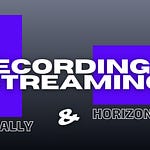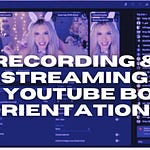There are ways to make content even with these hurdles, even if it is tremendously slower. I want to encourage people from all over the world to create more, and establish independent media.
I truly empathize with the challenges that people have to face just to survive, and being a creator is not necessarily part of a person’s hierarchy of needs. However fulfillment is a key part of happiness in life. Content creation fulfills that for a lot of people. A great example @gym_rat_in_gaza whom creates workout videos, despite literal bombs being dropped right door to him. It is a matter of establishing a bit of normalcy in his life, and he creates content to share his experiences in this time.
There are people all around the world dealing with their own challenges, but content creation is important to them. That is why I made this post!!
How can you go about making content with little to no internet?
I’m going to assume you have a device in this case, even if it is a public computer in an internet cafe. As the technology component is something I can’t wrap my head today in this post, but maybe in a sequel post.
Even a crappy android phone could work in this case, but a windows laptop (or any computer) would obviously work a lot better.
Most devices include a camera, and you can find ways of getting a microphone for cheap. That is one thing I think people need to consider is audio quality, even if it is just a microphone from a pair of gaming headphones.
From there you can record a video, or a podcast. However I think for most people the written format is going to be most accessible.
On average for me a blog post is anywhere between 4kb to 1mb depending on how long it is, and if it had images or not, etc. Very small, and that shouldn’t be difficult for anyone to upload even on dial up (hence why blogging was so popular in the late 90s/early 2000’s).
Most podcasts for me are around 25mb to 50mb, BUT please note that I export at the highest audio quality or around 320kbps. You could probably get away with 160kbps, which I think would also decrease the size quite a lot. Maybe even have a program to compress the file too.
Even 50mb isn’t that much in the grand scheme of things, but depending on your internet, the upload speed would be the largest limiting factor.
Videos on the other hand tend to be 300-500mb each, and that will be a lot harder to make for a lot of people. Even if you decrease the resolution, I record at 1080p (full HD), down to something like 720p (which in my opinion is the lowest you should go), the videos still might be 200-400mb.
Then what should you do? Really whatever your internet, and phone/computer storage will allow you to do. Keep in mind you usually only have to upload once, and then you can use tools to move things around in the cloud. However that first upload is the issue.
Meaning probably most people would be limited to podcasting, or even just blogging only. That is okay, but I wanted to paint the picture of what each one entails.
Here are some examples of tools that you can use!
Remember this isn’t the “end all, be all”, and so there may be a tool that is better for you. I just want to give you what comes to mind for me as a person who is obsessed with tools.
I write using Ghost CMS and Substack, which are tools that allow you to have a blog and email newsletter (keep in mind your blog posts themselves can be the newsletter, much like how this post is).
Email is one of the more important pieces to being a content creator, so this is a good way to get that head start.
I would stay away from more RAM heavy/demanding websites, such as Framer/Wix/Webflow, as they require more from your device even though they are in the cloud. Plus they don’t have automations, that will help you in this limited case.
Substack comes to mind for example, as I said in the video (make sure you watch that), where you can upload a video to Substack. Then on their servers they will send it to YouTube, and cut out the audio and send to Spotify/Apple. It is also one of the only three or so FREE podcast hosting platforms.
One thing I forgot to mention in the video is cost. Ghost CMS is better in a lot of ways, but doesn’t have podcast hosting and it also costs to host each month.
Otherwise you can use a paid podcast hosting tool like Transistor or Libsyn, however they may or may not be available in your region. Plus the cost is a lot higher, not even including currency exchange rate.
Now personally I use Nuelink as my social media management software, as it is best I’ve found after looking at every single tool on the market. However again I must add that tools are subject to what you can afford. While I think the automations in Nuelink are better, the ones in Repurpose can also help.
Note: I’m sharing links, but these are affiliate links as they were close on hand to copy.
I can’t tell you what is best for you because I don’t know each and everyone’s situation. However I am coming from what makes my job as a content creator EASIER, mindset, which directly does translate over to “how can I be a content creator when my environment makes it harder”.
Meaning the very topics I’ve been talking about on this Substack, for people like myself, they also directly help you who may be in a position that wants to make content. However due to external circumstances it is a lot harder for you to gain access.
Let me know if you have any questions, as I would love to help more people become their own independent media.










